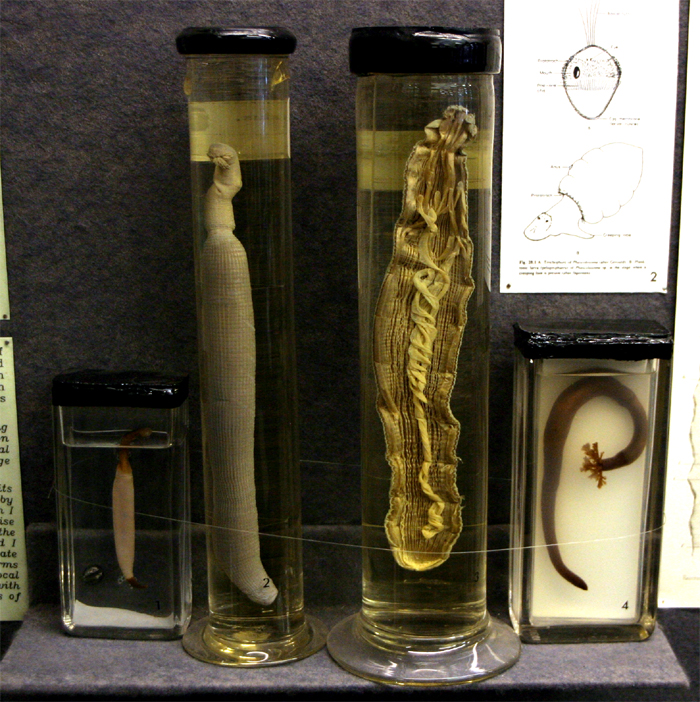
PHYLUM SIPUNCULIDA |
The peanut worms (320 species) are marine animals, ranging in size from 3 mm to 50 cm. The anterior portion of the body forms an introvert, which can be retracted into its trunk. The mouth is surrounded by tentacles. Sipunculids have a variety of life cycles. Some are without a pelagic stage; others have one pelagic trochophore; yet others have two pelagic stages. Golfingia macintoshii, the first of the genus to be described, was named by E. Ray Lankester after the Scottish sport of golf and Professor Mackintosh who gave him the specimen. In his memoir of 1884 Lankester explains: ‘The specimen was obviously something new and noteworthy, not only on account of its external structural features, but on account of its large size. The anticipations based on its external appearance were justified by a dissection of the specimen which I carried out in the intervals of exercise with the club and ball sacred to the classic ‘green’ of St Andrews; and I have accordingly ventured to dedicate the new genus of sipunculid worms indicated by this specimen to the local goddess whose cult is associated with the most ancient of Scottish seats of learning’. From left to right:
 |






